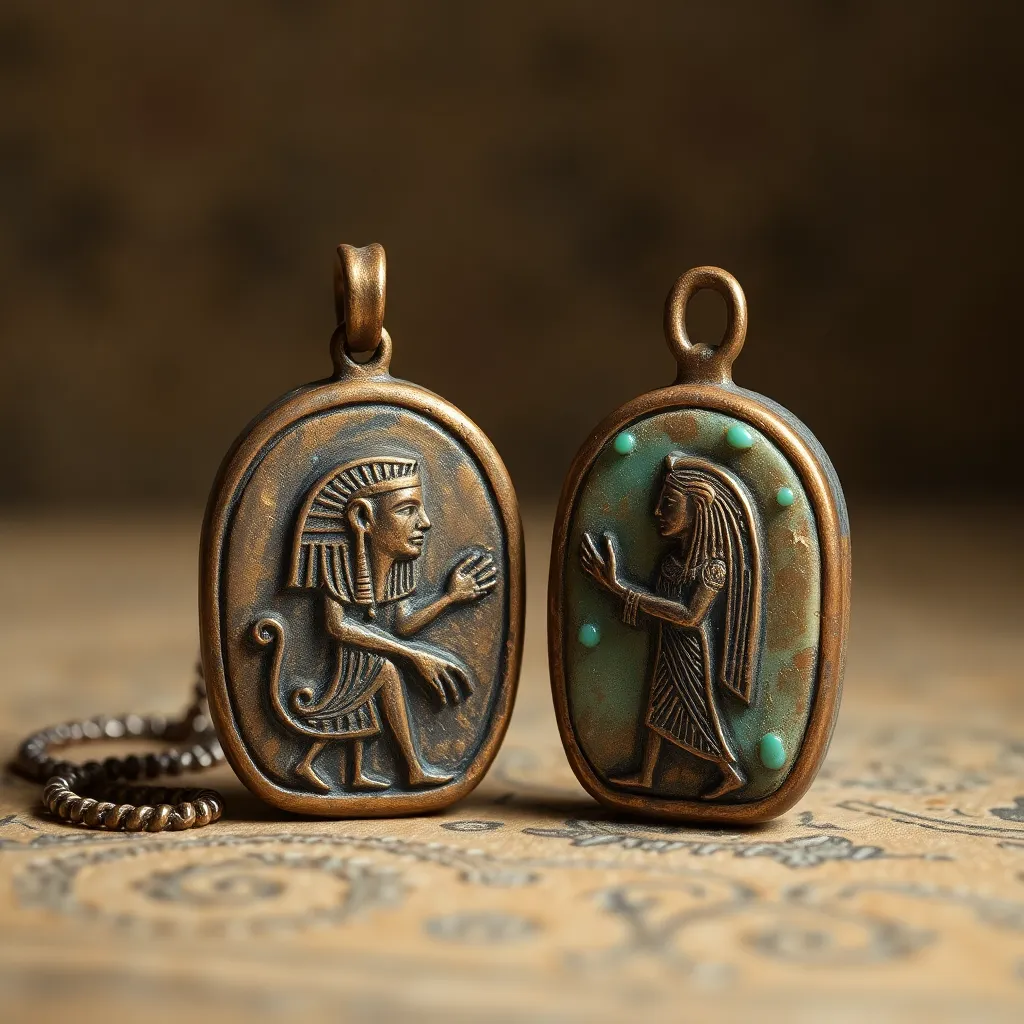The Use of Amulets in Egyptian Rituals for Love and Relationships
I. Introduction
Amulets in ancient Egypt were small objects believed to possess magical powers, often worn or carried to provide protection, health, and luck. These magical items were integral to the spiritual and daily lives of the Egyptians, particularly in matters of love and relationships.
In Egyptian culture, love and relationships were highly valued, intertwined with the spiritual beliefs and daily rituals of the people. This article focuses on the significance of amulets in rituals related to love, exploring their historical context, symbolism, and modern relevance.
II. Historical Context of Amulets in Ancient Egypt
The use of amulets has been documented throughout the entirety of ancient Egyptian history, from the Predynastic period to the Greco-Roman era. These artifacts were not only personal items but also served as vital components in funerary practices and everyday life.
There are several types of amulets used for various purposes:
- Protective Amulets: These were designed to ward off evil and ensure safety.
- Health Amulets: Used to promote healing and protection from illnesses.
- Love Amulets: Specifically crafted to attract love or strengthen romantic bonds.
Amulets were believed to harness the power of deities, symbols, and magical properties, serving as a bridge between the physical and spiritual realms.
III. The Symbolism of Love in Egyptian Amulets
Symbols associated with love in ancient Egypt were rich and varied. Common symbols included:
- Lotus Flower: A symbol of rebirth and love.
- Heart Scarab: Represented the heart’s place in love and truth.
- Isis Knot: A symbol of protection and love, associated with the goddess Isis.
Specific amulets designed for love often featured these symbols, combining them with inscriptions invoking deities associated with love, such as Hathor and Bes. These deities played a crucial role in the mythology surrounding love and relationships.
IV. Rituals Involving Amulets for Love
Common rituals that incorporated amulets for love included:
- Wearing Amulets: Individuals would wear amulets during significant events, such as weddings.
- Offerings to Deities: Rituals often involved making offerings to deities to bless the amulets.
- Incantations: Spoken prayers or incantations were used to activate the amulets’ powers.
The timing of these rituals was also significant; many were performed during specific lunar phases believed to enhance the effectiveness of the amulets. Personalization of amulets was common, with individuals inscribing their names or specific desires on them to tailor their magical properties to their unique circumstances.
V. Case Studies: Amulets in Love Rituals
Historical texts reveal fascinating accounts of individuals using amulets in their love rituals. For example:
- The Love Amulet of Neferet: A story from the Middle Kingdom describes a woman named Neferet who wore a heart scarab amulet to win the affection of a nobleman.
- Rituals of the Priestesses of Hathor: Accounts indicate that priestesses would conduct elaborate rituals involving love amulets, believed to harness the goddess’s power to influence relationships.
These practices illustrate the deep-seated beliefs surrounding the use of amulets, where outcomes often reflected the individual’s faith in their power.
VI. The Role of Amulets in Modern Egyptian Relationships
Today, the ancient practices surrounding love amulets continue to have relevance in contemporary Egyptian culture. Many modern Egyptians still believe in the power of amulets, incorporating them into their lives in various ways:
- Custom Amulets: Individuals often have amulets made to suit their personal desires and needs.
- Tourism Influence: The interest in ancient Egyptian culture among tourists has revived the popularity of amulets, leading to a blend of traditional and modern practices.
- Social Rituals: Amulets are still used in social rituals, such as weddings, to bless unions.
This continuity suggests that while Egypt has modernized, the cultural significance of amulets in love and relationships endures.
VII. Criticism and Skepticism of Amulet Efficacy
Despite the cultural significance of amulets, some scholars critique their effectiveness. They argue:
- Lack of Empirical Evidence: There is a scarcity of scientific proof supporting the efficacy of amulets.
- Modern Perspectives: Insights from psychology suggest that belief in amulets may stem from cognitive biases and the placebo effect.
Balancing cultural significance with scientific reasoning, it is essential to respect the beliefs surrounding amulets while recognizing the limitations of their magical claims.
VIII. Conclusion
Amulets have played a vital role in Egyptian love rituals, serving as powerful symbols of protection, attraction, and affection throughout history. Their significance reflects the deep-seated beliefs in the interconnectedness of the physical and spiritual worlds.
The enduring legacy of these practices continues to influence modern relationships in Egypt, highlighting a fascinating intersection of tradition and contemporary life. In a world where love and relationships remain central to human experience, the amulet’s charm persists, bridging ancient customs with modern realities.




